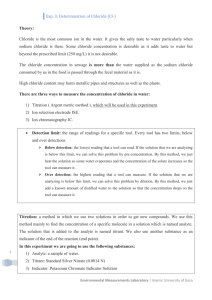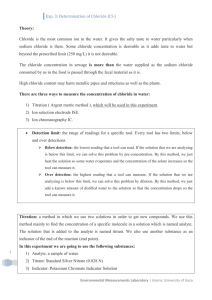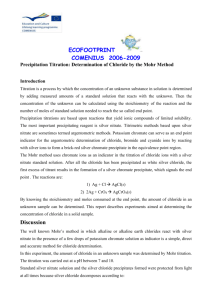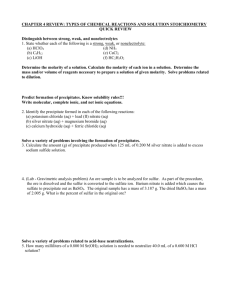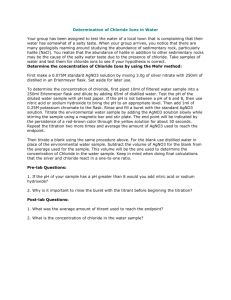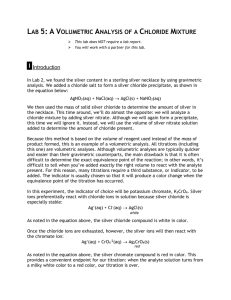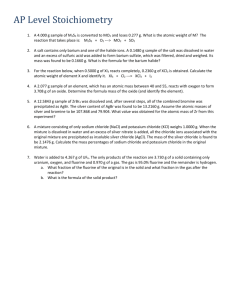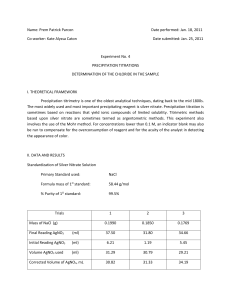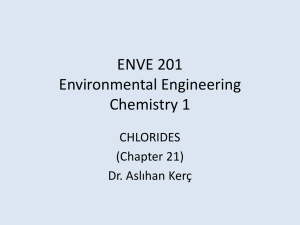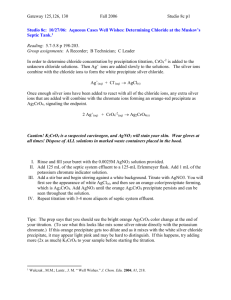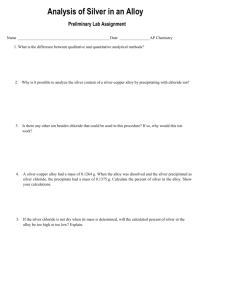Determination of an Unknown Chloride - mvhs
advertisement
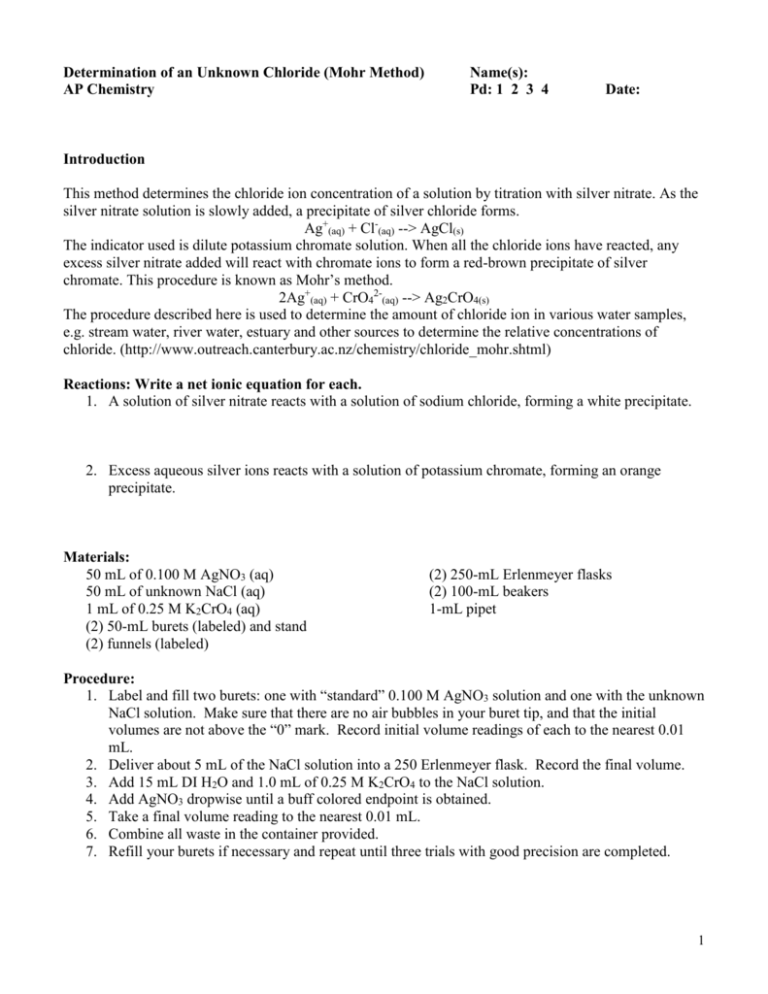
Determination of an Unknown Chloride (Mohr Method) AP Chemistry Name(s): Pd: 1 2 3 4 Date: Introduction This method determines the chloride ion concentration of a solution by titration with silver nitrate. As the silver nitrate solution is slowly added, a precipitate of silver chloride forms. Ag+(aq) + Cl-(aq) --> AgCl(s) The indicator used is dilute potassium chromate solution. When all the chloride ions have reacted, any excess silver nitrate added will react with chromate ions to form a red-brown precipitate of silver chromate. This procedure is known as Mohr’s method. 2Ag+(aq) + CrO42-(aq) --> Ag2CrO4(s) The procedure described here is used to determine the amount of chloride ion in various water samples, e.g. stream water, river water, estuary and other sources to determine the relative concentrations of chloride. (http://www.outreach.canterbury.ac.nz/chemistry/chloride_mohr.shtml) Reactions: Write a net ionic equation for each. 1. A solution of silver nitrate reacts with a solution of sodium chloride, forming a white precipitate. 2. Excess aqueous silver ions reacts with a solution of potassium chromate, forming an orange precipitate. Materials: 50 mL of 0.100 M AgNO3 (aq) 50 mL of unknown NaCl (aq) 1 mL of 0.25 M K2CrO4 (aq) (2) 50-mL burets (labeled) and stand (2) funnels (labeled) (2) 250-mL Erlenmeyer flasks (2) 100-mL beakers 1-mL pipet Procedure: 1. Label and fill two burets: one with “standard” 0.100 M AgNO3 solution and one with the unknown NaCl solution. Make sure that there are no air bubbles in your buret tip, and that the initial volumes are not above the “0” mark. Record initial volume readings of each to the nearest 0.01 mL. 2. Deliver about 5 mL of the NaCl solution into a 250 Erlenmeyer flask. Record the final volume. 3. Add 15 mL DI H2O and 1.0 mL of 0.25 M K2CrO4 to the NaCl solution. 4. Add AgNO3 dropwise until a buff colored endpoint is obtained. 5. Take a final volume reading to the nearest 0.01 mL. 6. Combine all waste in the container provided. 7. Refill your burets if necessary and repeat until three trials with good precision are completed. 1 Data/Results: AgNO3 Trial Vinitial (mL) Vfinal (mL) NaCl V (mL) Vinitial (mL) Vfinal (mL) V (mL) M 1 2 3 Average Calculations & Analysis: For each trial, calculate the molarity of the unknown chloride solution and the average. 2 Error Analysis: 1. Use the value provided by your teacher to calculate your percent error. 2. Use the class average to calculate the % difference between the class and your average value. % Difference = | Class value – your value | Average of 2 values 3. Give two sources of error for this procedure. a. b. 3

